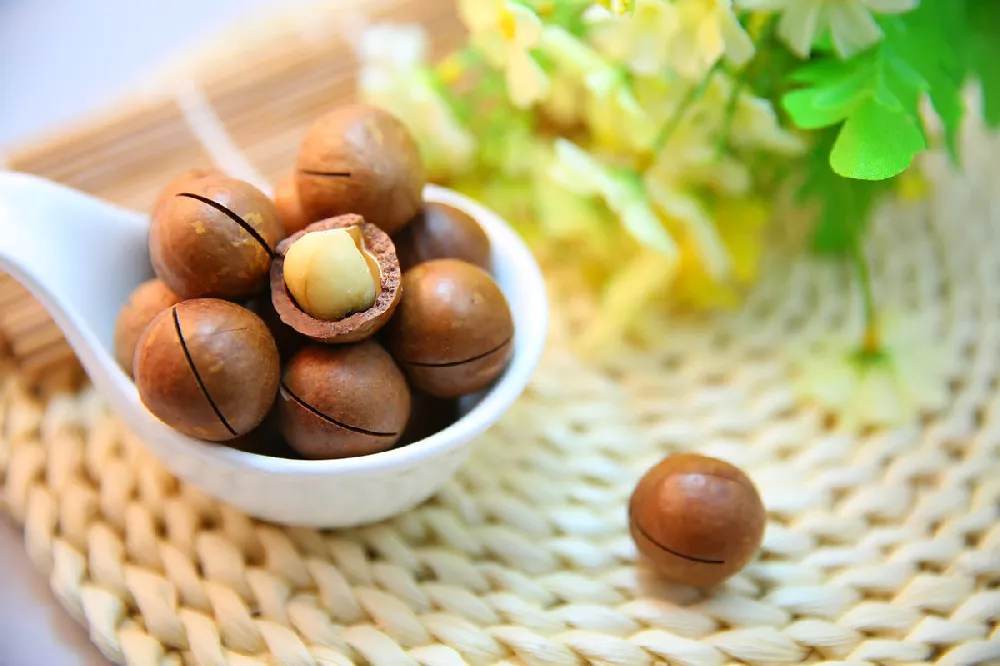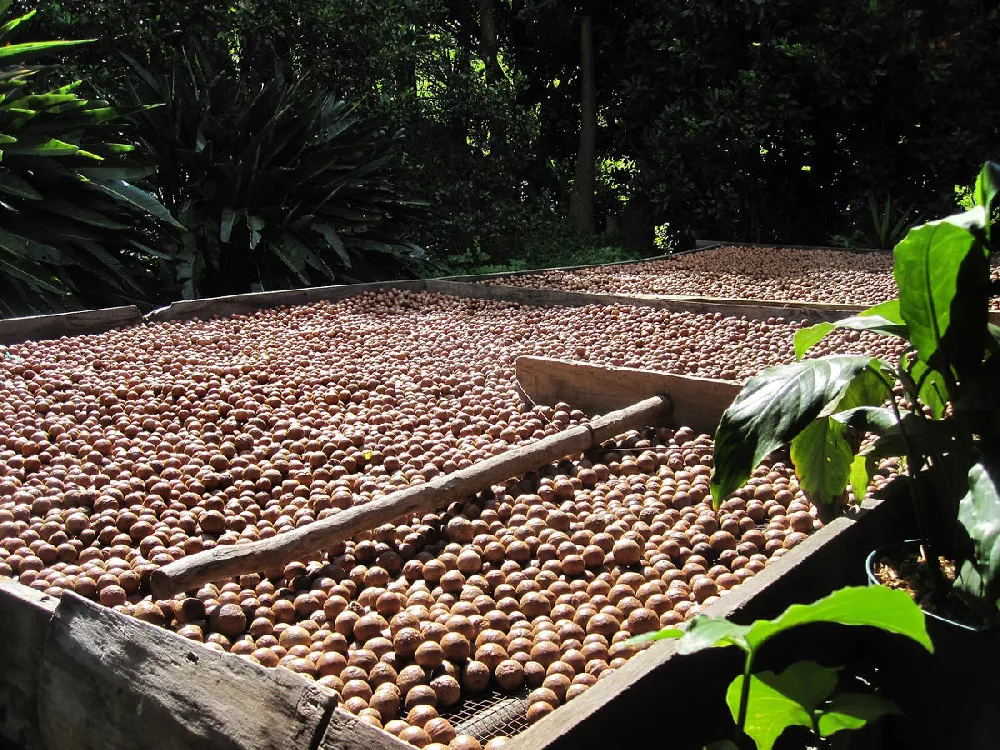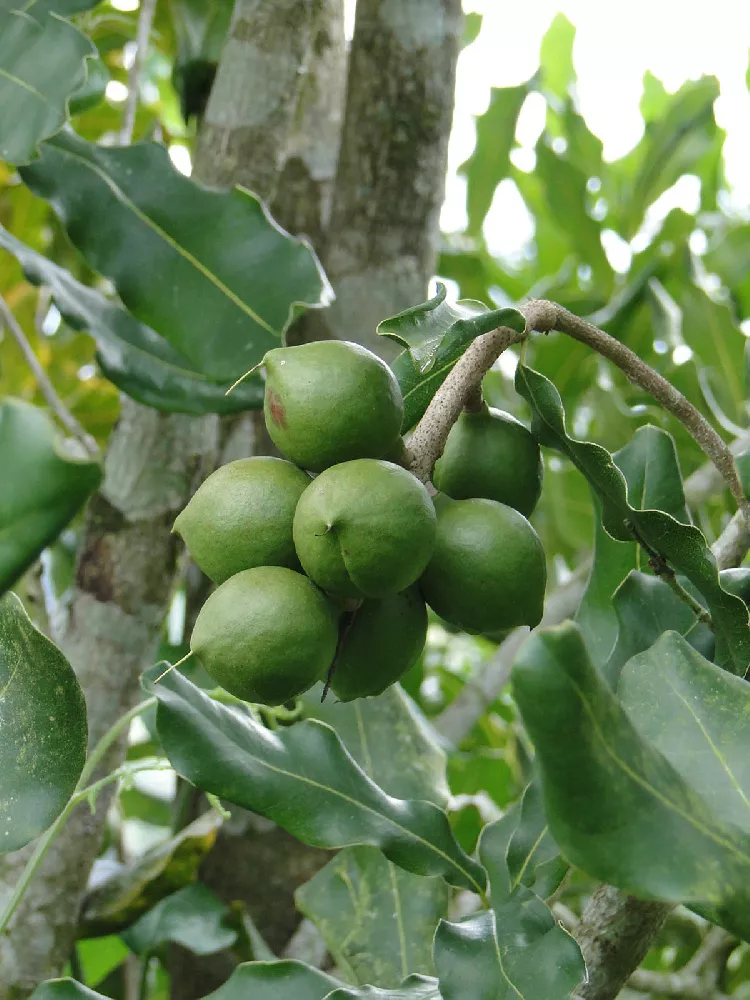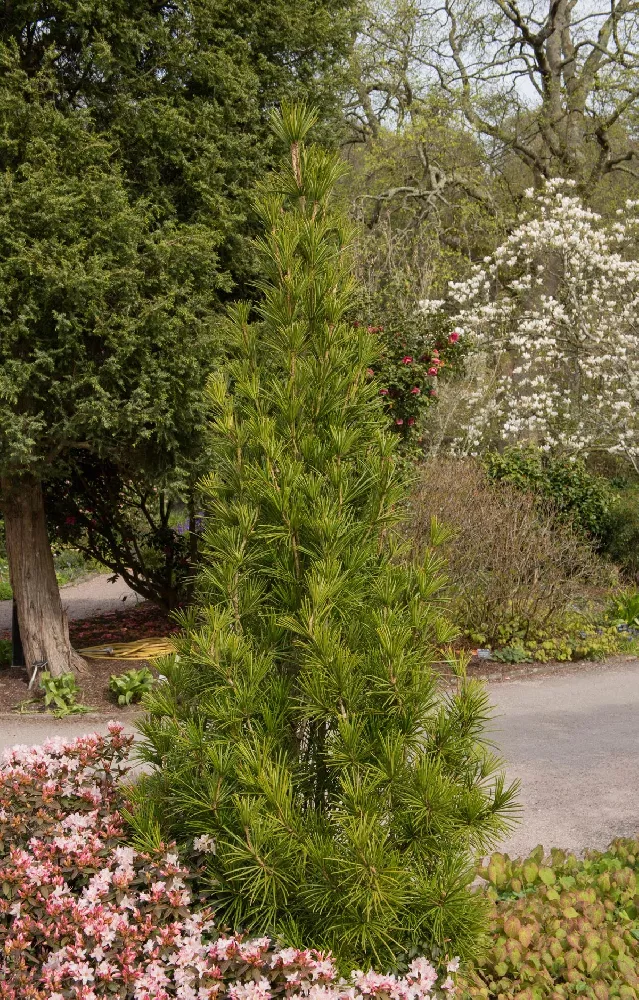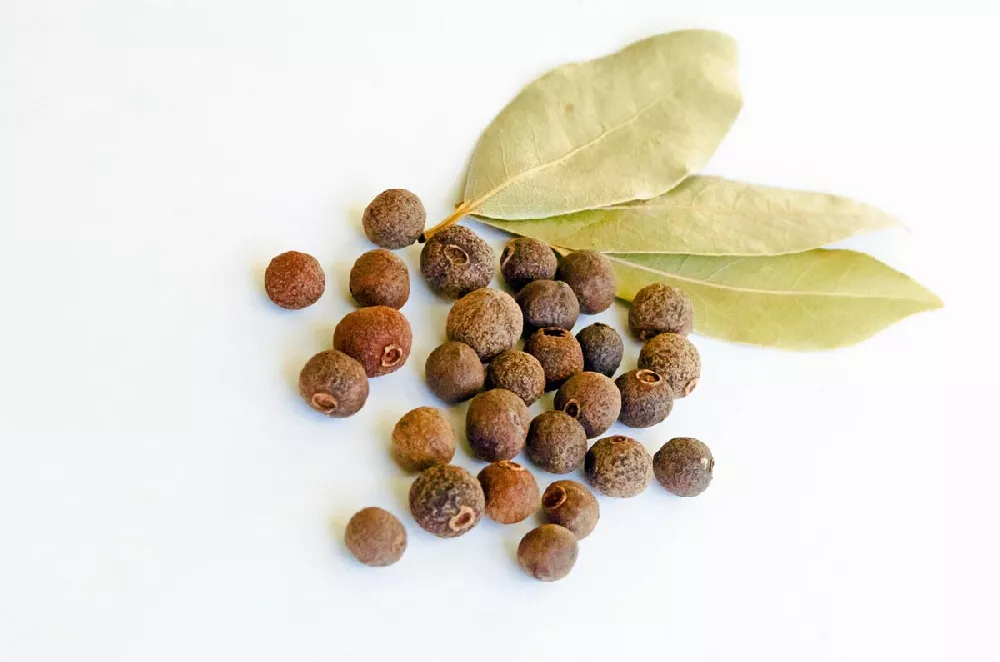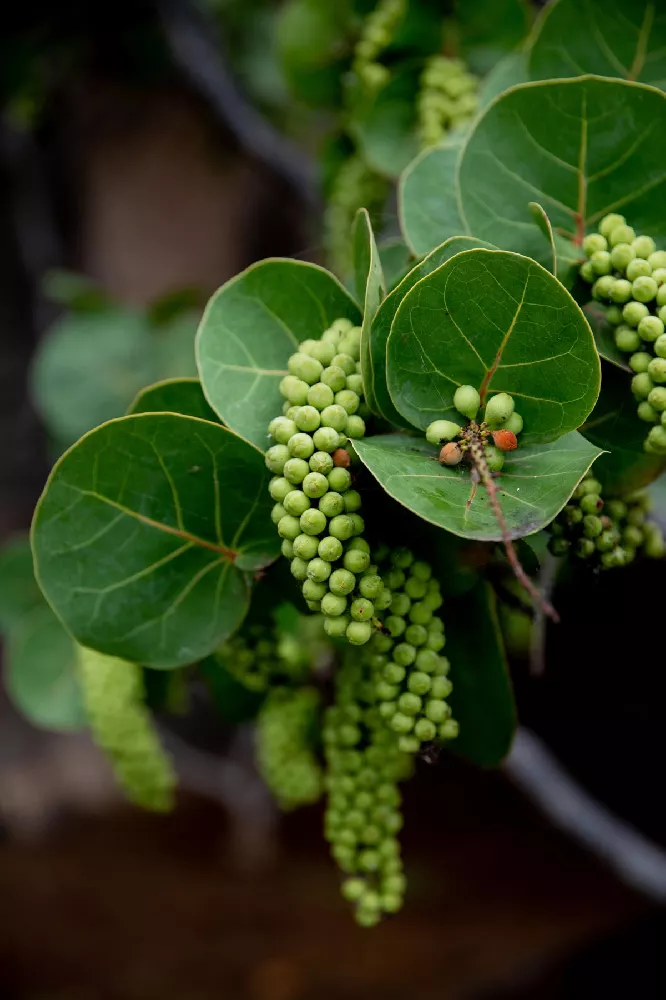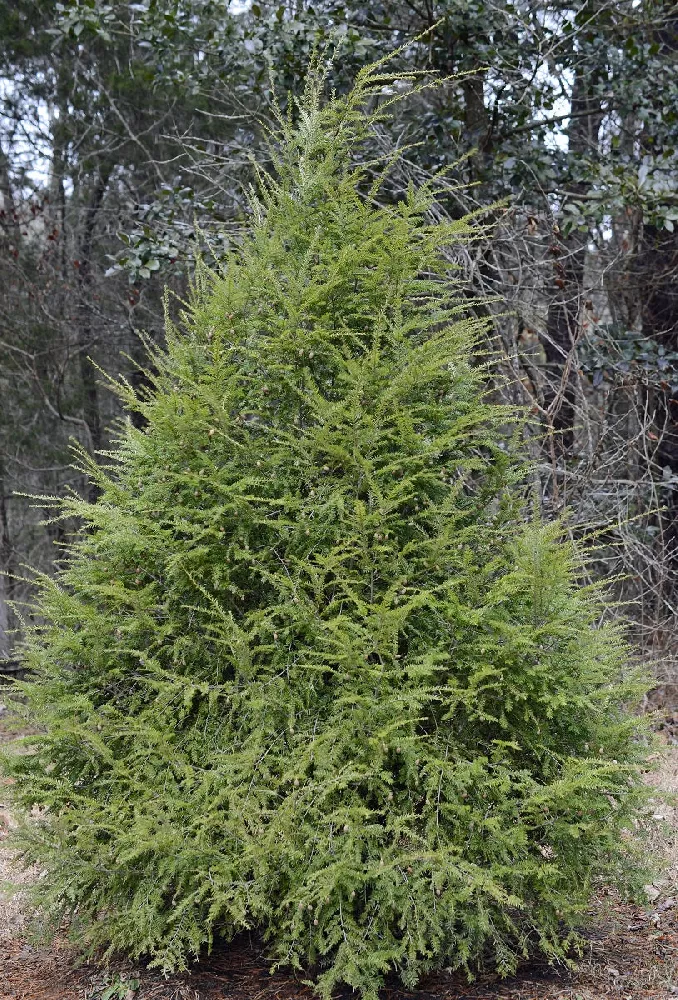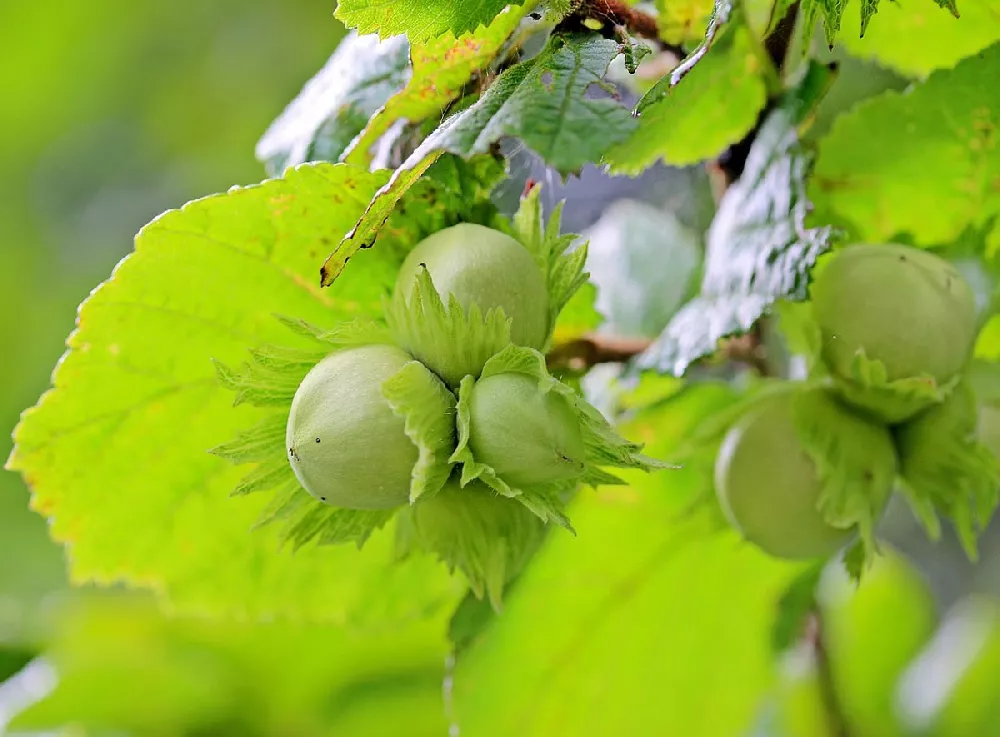- Home >
- Nut Trees >
- Macadamia Nut Trees
Macadamia Nut Trees for Sale - Buying & Growing Guide
Native to Australia, macadamia nut trees are grown the world over for their luscious nuts, which feature a sweet meat that is prized for baking. But there's more than just the nut to this attractive tree. Members of the Macadamia genus, macadamia trees are glossy evergreens with holly-like leaves that offer ample shade and a pleasing, wide shape. They are also a fine option for growing in containers if you live in northern regions. Here are a few other factors that make macadamia nut trees appealing to gardeners of all types:
- The trees may reach 30 to 40 feet tall — and they can be just as wide, offering welcome shade in tropical and subtropical locations.
- They are best grown from store-bought saplings, as they do not grow true to seed.
- The trees are self-fertile, and you may get nuts with only one tree, though having multiple trees will increase your harvest.
Enter your zip code to find nearby stores that may carry this plant.
Plant Care
Sunlight

Macadamia nut trees like full sun, although they will tolerate some afternoon shade.
Watering
Water your macadamia deeply year-round. They do not like soggy roots, but do appreciate abundant water.
Fertilizing

Fertilize with a slow-release product in spring and fall; choose a fertilizer that is low in phosphorus.
Planting and Care
Planting instructions
If planting outdoors, site your macadamia nut tree at least 20 feet away from buildings, sidewalks, and driveways, in a spot with well-drained soil and at least six hours of sun a day. Dig a hole that’s twice as wide and just as deep as the root ball. Unpot your sapling, and tease out any encircling roots so they do not girdle the tree and kill it. Place it in the hole so that the top of the root ball is level with the soil grade.
Fill in around the root ball with soil that’s been mixed with well-rotted compost or manure, tamping it down as you go to eliminate air pockets. Once finished, water thoroughly until the ground is soaked but not soggy.
Watering and nutrients
When newly planted, water your macadamia nut tree every other day. Your goal is to keep the soil around the root zone moist but not saturated. Once the tree is established and new growth appears, you can cut back on watering to once a week — more if it is very hot during the midsummer. Fertilize your tree with a slow-release balanced fertilizer designed for fruit and nut trees in the spring and fall, following package directions.
Pollination
Macadamia nut trees are monoecious, meaning that a single tree has both male and female flowers. Pollen is transferred by wind, insects, and birds. Smaller, container-grown macadamias are unlikely to flower, however. Yield for larger trees can be increased by having two or more trees near each other.
Pruning
Prune broken, diseased, or dead branches whenever you come across them. When your tree is young, prune it to a central leader (branch) in the spring, cutting back any secondary branches that grow out of the base of the tree. Allow the strongest lateral branches to mature, cutting out any that are weaker as well as those that rub against each other.
Pests, diseases, and animals
Macadamia nut tree pests include the macadamia nut borer and the tropical nut borer, both of which feed on the nuts. Remove fallen nuts from the ground to discourage them; insecticides can be used as well, but these are ineffective once the insects have entered the nuts.
Macadamia nut trees are susceptible to fungal diseases such as anthracnose and botrytis. Healthy trees can often fight off infection; make sure you’re not over-watering your trees, and plant them in soil that drains well.
Rats, squirrels, and mice may be attracted to the nuts. One tactic to fight rodents is to install nesting boxes for predatory birds, such as owls, which can help eliminate these pests.
Harvesting
Macadamia nut trees may begin producing nuts as early as their third year, but you won’t get a significant harvest until they are 7 to 8 years old. Nuts are ready for picking when they detach easily from the tree.
Achieving maximum results
Macadamia nut trees grow naturally in tropical regions, and they like humidity and warm temperatures. Grow them outdoors in parts of California and Florida and anywhere temperatures never go below freezing. When grown outside, if properly cared for, you may get a modest harvest of nuts several years after planting. Although not strictly necessary, nut production will generally increase if you have several trees in easy reach of each other. Container-grown macadamias are unlikely to produce nuts, but their shiny green leaves and elegant silhouette make them attractive additions to your patio.
FAQs
How big do macadamia nut trees get?
When grown outside, a macadamia nut tree will top out at 30 to 40 feet tall and just about as wide. When grown as a patio plant, macadamia trees can be pruned to a much shorter stature, easily able to be moved from patio to house when the temperatures drop.
Are macadamia nut trees drought-resistant?
It depends on the age of the tree. Young macadamias need consistent moisture, especially in the warmer areas of their range. A container-grown macadamia should be watered every few days, when the soil is dry one inch below the surface. After four to five years, the trees become more able to handle drought and dry conditions, but they will still appreciate an occasional deep watering.
Are macadamia nut trees toxic?
Dogs and other small animals should be discouraged from eating the leaves, nuts, or bark, as they can cause hyperthermia, vomiting, and increased heart rate. Contact your veterinarian if your companion animal eats macadamia nuts, as they will need medical care.
Compare Similar Products
You can't add more Product Name - Product size to the cart.
OK